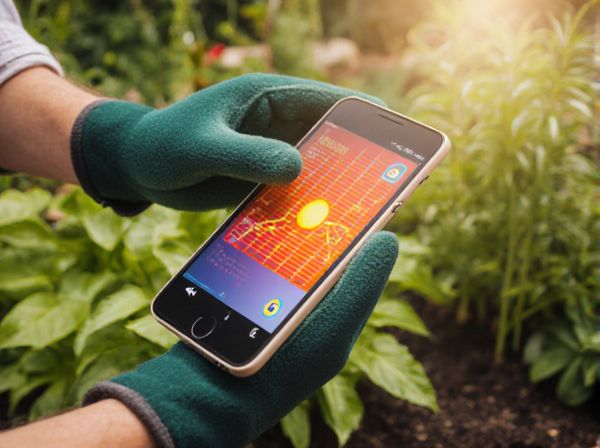
Passive Solar Heating vs Supplemental Heating Illustration
Passive solar heating harnesses natural sunlight through south-facing windows and thermal mass materials to warm interior spaces with minimal energy use. Supplemental heating systems, such as electric or gas heaters, provide consistent warmth during periods of low sunlight or extreme cold, ensuring optimal growing conditions. Combining passive solar strategies with supplemental heating maximizes energy efficiency and plant health in greenhouses.
Table of Comparison
| Feature | Passive Solar Heating | Supplemental Heating |
|---|---|---|
| Energy Source | Solar radiation absorbed and retained | Electricity, gas, or fuel-based |
| Cost | Low operating cost, no fuel needed | Higher operating cost due to fuel consumption |
| Installation | Incorporated into greenhouse design (windows, materials) | Requires heaters and fuel systems installation |
| Temperature Control | Limited, relies on natural sunlight and thermal mass | Precise and adjustable temperature settings |
| Environmental Impact | Eco-friendly, no emissions | Potential emissions depending on fuel type |
| Reliability | Dependent on weather and daylight hours | Reliable, operates regardless of weather |
| Maintenance | Minimal maintenance required | Regular maintenance needed for heaters |
Introduction to Greenhouse Heating Methods
Passive solar heating harnesses natural sunlight through greenhouse glazing, maximizing heat retention with materials like thermal mass for night regulation. Supplemental heating employs external energy sources, such as electric or gas heaters, to maintain optimal temperatures during low sunlight periods. Combining both methods ensures consistent climate control, promoting healthy plant growth year-round.
What Is Passive Solar Heating in Greenhouses?
Passive solar heating in greenhouses utilizes natural sunlight to capture and store heat without mechanical systems, relying on materials like thermal mass and strategic glazing. This method maximizes energy efficiency by absorbing sunlight during the day and releasing heat gradually to maintain consistent temperatures. Unlike supplemental heating, which depends on external energy sources, passive solar systems reduce operational costs and environmental impact by harnessing renewable solar energy.
How Supplemental Heating Works in Greenhouses
Supplemental heating in greenhouses operates by providing additional warmth through systems such as electric heaters, gas furnaces, or hot water pipes, maintaining optimal temperatures when passive solar heating is insufficient. These heating methods distribute consistent heat, preventing damage to plants during cold nights or cloudy days, ensuring stable growth conditions. Integration with thermostats and climate control systems enhances energy efficiency by activating supplemental heat only when temperatures drop below specific thresholds.
Comparing Energy Efficiency: Passive vs Supplemental
Passive solar heating in greenhouses utilizes sunlight captured through materials like glass to naturally warm the space, minimizing reliance on external energy sources and maximizing energy efficiency. Supplemental heating systems rely on additional fuels or electricity, increasing operational costs and carbon footprint but ensuring temperature control during insufficient sunlight. Comparing energy efficiency, passive solar heating offers sustainable, low-cost heat retention, while supplemental heating provides reliable temperature regulation at a higher energy consumption level.
Cost Analysis: Installation and Operation
Passive solar heating in greenhouses significantly reduces operational costs by harnessing natural sunlight, eliminating the need for fuel or electricity. Installation expenses for passive systems primarily involve materials like thermal mass and glazing, often lower than the complex infrastructure required for supplemental heating systems. Supplemental heating demands ongoing energy sources such as gas or electric, increasing long-term operational costs despite potentially higher initial installation prices.
Climate Considerations for Each Heating Approach
Passive solar heating in greenhouses utilizes natural sunlight and thermal mass to maintain temperature, making it highly effective in milder climates with ample sunlight. Supplemental heating systems, such as electric or gas heaters, are essential in colder regions or during extended cloudy periods to ensure optimal plant growth. Climate considerations dictate the balance between these approaches, with passive solar best suited for temperate zones and supplemental heating required in harsh winter environments.
Environmental Impact of Heating Choices
Passive solar heating in greenhouses significantly reduces environmental impact by utilizing natural sunlight to maintain warmth, lowering reliance on fossil fuels and decreasing greenhouse gas emissions. Supplemental heating, often powered by electricity or propane, increases energy consumption and carbon footprint, especially if non-renewable energy sources are used. Choosing passive solar design enhances sustainability and aligns with eco-friendly greenhouse management practices.
Pros and Cons of Passive Solar Heating
Passive solar heating in greenhouses harnesses natural sunlight to maintain warmth, significantly reducing energy costs and lowering environmental impact. However, it depends heavily on adequate solar exposure and insulation, which limits effectiveness during cloudy days or nighttime, requiring backup supplemental heating. This method promotes sustainability but may not consistently meet temperature demands in colder climates without integrated heating systems.
Pros and Cons of Supplemental Heating
Supplemental heating in greenhouses ensures stable temperatures during cold periods, extending growing seasons and protecting sensitive plants from frost. However, it increases energy costs and requires careful management to avoid overheating or excessive humidity, which can encourage disease. While supplemental heating offers precise temperature control, it depends on reliable energy sources and may reduce the sustainability benefits of passive solar heating.
Choosing the Right Heating Method for Your Greenhouse
Choosing the right heating method for your greenhouse depends on factors such as climate, size, and budget. Passive solar heating utilizes natural sunlight and thermal mass to maintain temperature, ideal for energy efficiency and sustainability in mild climates. Supplemental heating, through electric or gas systems, provides consistent warmth in colder regions, ensuring optimal plant growth during extended cold periods.
Passive Solar Heating vs Supplemental Heating Infographic

 gardendif.com
gardendif.com